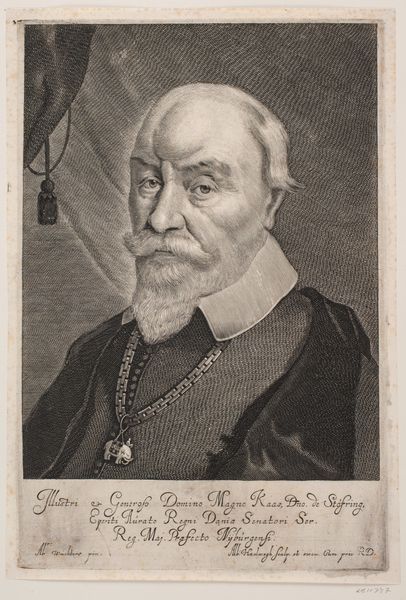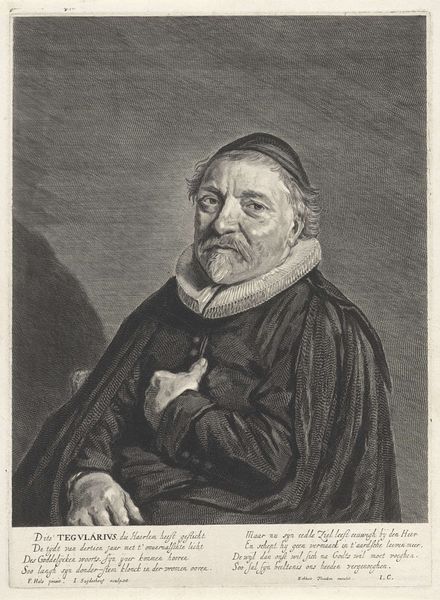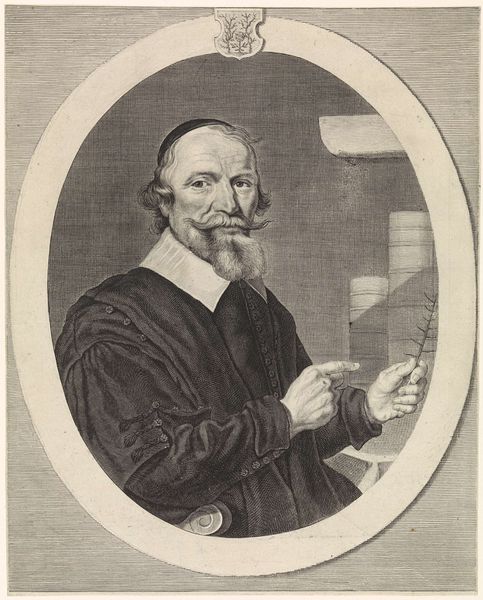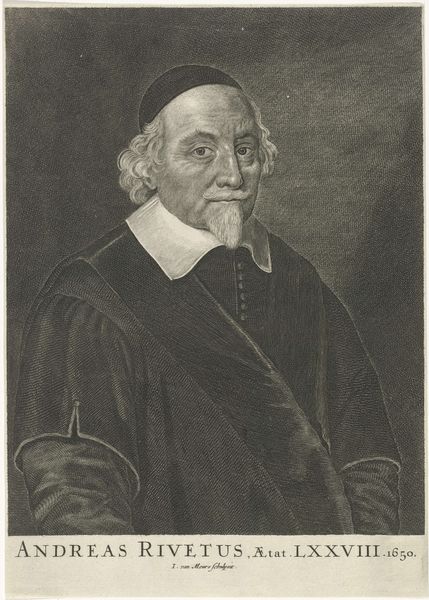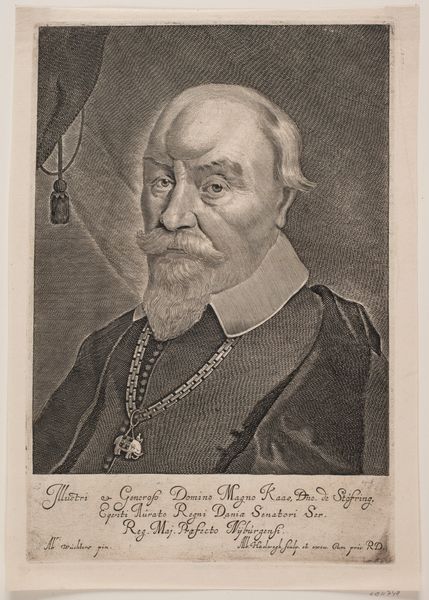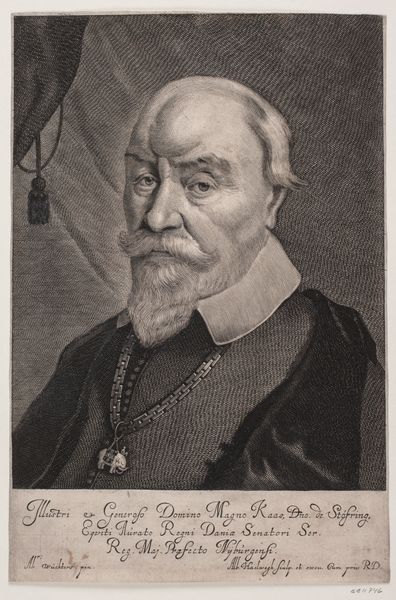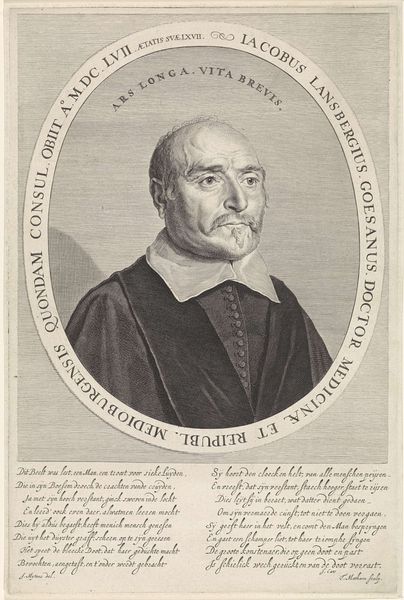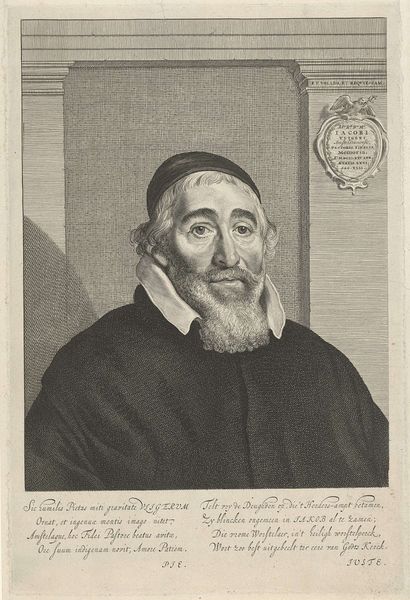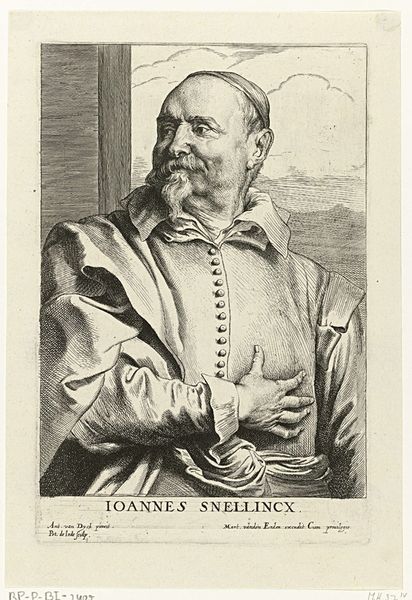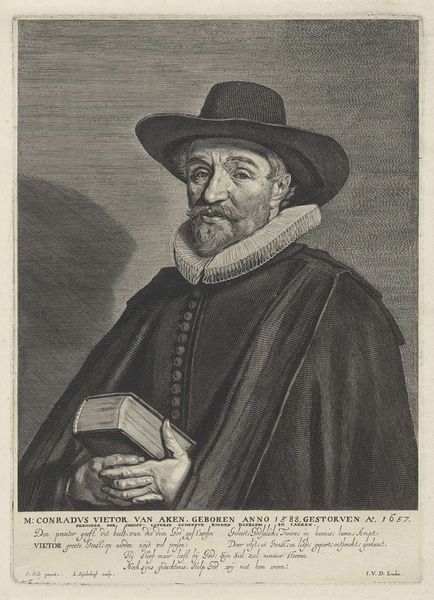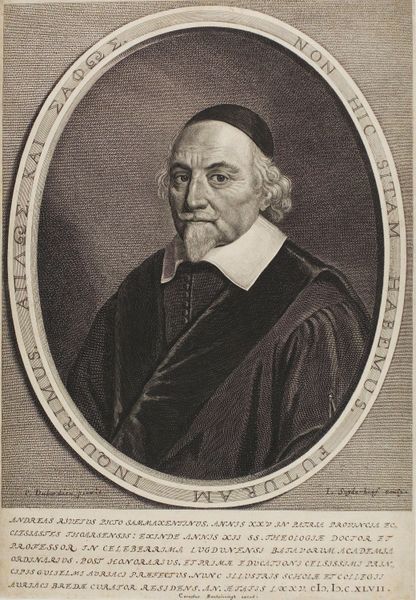
print, engraving
#
portrait
#
baroque
# print
#
engraving
Dimensions: height 328 mm, width 238 mm
Copyright: Rijks Museum: Open Domain
Curator: This is "Portret van Jacobus Revius," an engraving made between 1641 and 1686 by Jonas Suyderhoef. Its precise date is less crucial than understanding how such prints functioned within the economy of artistic production at the time. Editor: It’s striking! I’m fascinated by how much detail is captured through just engraving. I am also curious, how would the means of producing this artwork influence how we interpret it today? Curator: Consider the labor involved in creating the print. Engraving was a highly skilled, time-consuming process, involving specialized tools, workshop practices, and material knowledge. This mediated process immediately creates a distinction between, say, painting, which often suggests immediacy, direct access to the artist's touch. Here, we have an artistic process fundamentally linked to craft. Editor: So, it's not just about representing Revius, but also about the act and implications of reproducing images. The inscription at the top—"VINCAT AMOR CHRISTI"—how does that play into the cultural context? Curator: Exactly! This isn't simply a neutral portrait. It suggests a propagandistic intention, tying Revius' image and personage to theological virtue. How does the use of a readily reproducible medium like engraving enhance the spread and accessibility of that ideological messaging? Moreover, who had access to such engravings, and what did they signify to a burgeoning middle class? Editor: That makes me see it differently, not just as a portrait but as an artifact reflecting specific production methods used to shape cultural values during that era. This reframes how I understand the work as an object embedded within a particular historical context. Curator: Precisely! This allows us to move beyond simplistic notions of artistic genius and toward a critical assessment of labor, materiality, and social influence in art. What I appreciate is how understanding the work's materiality complicates art history. Editor: Thank you for highlighting the materiality; now I realize how important the intersection of material, labor, and distribution can change our understanding of an artwork's role within its society.
Comments
No comments
Be the first to comment and join the conversation on the ultimate creative platform.
